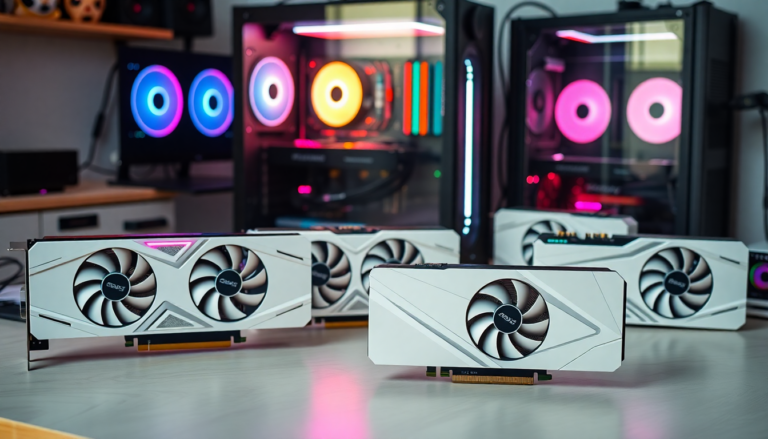Argomenti trattati
Imagine a graphics card that not only delivers incredible performance but also adds a touch of elegance to your gaming rig. That’s exactly what Asus is aiming for with its latest announcement of white editions across its RTX 50-series lineup. Scheduled to be showcased at Computex, these stunning GPUs are designed to appeal to both avid gamers and PC builders looking to enhance the aesthetic of their setups. The introduction of these white variants signifies a shift in consumer preferences, where aesthetics are becoming as important as raw performance.
What’s new in Asus’s RTX 50-series?
The new lineup features the high-end ROG Astral, as well as the TUF Gaming and Prime series, all sporting a striking white finish. While the teaser highlights the triple-fan designs—quad-fan for the Astral—it seems Asus is currently focusing on these models, with no mention of dual-fan options for this year. It’s a bit of a letdown for those of us who appreciate a variety of choices, but the emphasis on these robust cooling solutions certainly aligns with performance demands.
Currently, Asus lists its white GPUs for the RTX 5090, 5080, 5070 Ti, and 5070 on its website. However, for the RTX 5060 Ti and 5060, there are no fully white options available. Instead, the Dual series offers a dual-tone finish that combines black and white, which is a nice compromise, but let’s be honest: it’s not the same as an all-white model. In my experience, there’s something incredibly satisfying about a cohesive color scheme, especially if you’re into building a themed rig.
The growing trend of white components
As we dive deeper into the world of PC building, it’s becoming increasingly clear that aesthetics matter just as much as performance. The rise of white components is not merely a trend; it’s a reflection of a broader shift in consumer demands. More and more builders are opting for components that not only perform well but also look good while doing it. This is particularly true for those who see their PCs as a form of self-expression.
But here’s the kicker: the demand for white components often leads to higher prices and limited availability. As many know, this scarcity can drive up both the MSRP and resale values. Higher manufacturing costs combined with limited production runs mean that if you want a chic white GPU, you might have to dig deeper into your pockets. Just the other day, a friend of mine shared his experience trying to snag a white GPU, and the prices were through the roof compared to their black counterparts. It’s a tough pill to swallow, but for those who truly value aesthetics, it might just be worth it.
Competition in the white GPU market
Asus isn’t alone in its pursuit of the white GPU market. Other major players like Gigabyte and MSI have also jumped on the bandwagon, offering their own white variants that cater to this growing audience. For instance, Gigabyte has rolled out white editions across its Aorus Master, Aero, and Eagle models. Meanwhile, MSI’s Gaming Trio and Ventus 2X showcase clean, all-white designs that are hard to resist.
Zotac, however, has opted for a unique twist by blending white with bronze in its Solid OC range, though this is currently limited to the high-end RTX 5090 and 5080 models. It’s fascinating to see how each manufacturer is interpreting this trend, and I can’t help but wonder where it will lead us next. Perhaps we’ll see entire builds dedicated to the white aesthetic, creating an entirely new sub-culture within the PC building community.
Final thoughts on the Asus white GPUs
With Computex just around the corner, the excitement surrounding Asus’s new white RTX 50-series GPUs is palpable. I remember when I first laid eyes on a white component in a showcase build—it was like a breath of fresh air against the usual black and RGB-heavy designs. I can only imagine the buzz that these new models will create within the PC building community. It’s a bold move that not only highlights Asus’s commitment to innovation but also their responsiveness to evolving consumer preferences. As we await more details, one thing is clear: the future of PC components is looking stylishly bright.

